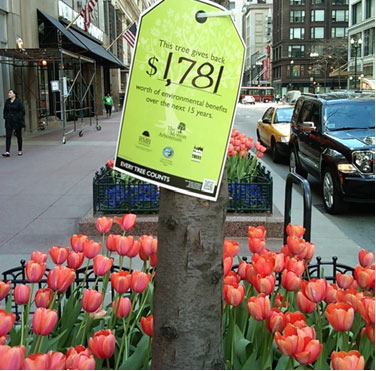This is the last in a four-part series on the Olympic Games as a catalyst for urban, and specifically transportation, development. In Part I, we explored the background of how the Games are administered at the local level. Part II examines the growth of the Olympic Games and how it became a catalyst for general urban development. And Part III examined transport infrastructure in relation to the Games, with a closer look at London’s preparation for the upcoming 2012 Summer Olympics. In this last post on the Olympic Games, we’ll analyze what this all means for the Olympic Games and for the host cities themselves.
Analysis

A London Underground train decorated to promote London's Olympic bid. (Photo credit: Wikipedia)
Transportation infrastructure has become essential component of successfully hosting a mega event such as the Olympic Games. Due to the large volume of spectators and athletes, logistics problems become complex as organizers seek to make the Games as efficient as possible in an urban transport network that is often inefficient. Because of each city’s unique history and urban form, the impacts of the Games on transport development differ.
Additionally, it becomes clear that when examining previous Olympic Games over the last few decades, many of the host cities have tried to choose sites which were underutilized or brownfield sites. Often these sites are the only large sites within the central city that is suitable for Olympic venues. Additional incentives for this seem to be a regeneration of central city areas like we have seen at Homebush Bay in Sydney, Helliniko Airport in Athens, and Stratford in London. In all cases, some transportation infrastructure may have been in place, yet it was underutilized or inefficiently serving the site.
In Sydney, host of the 2000 Summer Olympics, the Games were a significant catalyst for urban infrastructure development around the region. Beside the direct investments made for the Games, the indirect investments prior to or after the Olympic Games were expedited. These improvements included better transport connectivity and a major capacity expansion scheme to its airport, Kingsford Smith International, as well as capacity improvements at its main rail hub, Central Station. All together, direct investment in transport infrastructure as a result of the Olympic Games was A$370 million ($384 million), while indirect investment was approximately A$3 billion ($3.1 billion).
Athens, host of the 2004 Summer Olympics, had transport issues that were significantly different from Sydney’s. Athens is an ancient city with a dense urban form. It also did not have much of the tertiary structure that is necessary to handle the increased demands of an Olympic Games. Due to the city’s urban form and a lack of large parcels of available public land, Athens had to spread out its Olympic venues across the Attica Plain. This was problematic due to the notorious traffic congestion facing Athens and the little public transport infrastructure within the city. Thus, by agreeing to host the Olympic Games, Athens embarked on a scale of transport investment that had not been seen since Tokyo in 1964. The direct and indirect investments in transport infrastructure included a new international airport, two metro lines, a tram system, and a suburban railway. All of these infrastructure improvements were built with the goal of making transport more efficient during the Olympic Games. In total, direct investment as a result of the Olympic Games in transport infrastructure was over 2.86 billion euro ($4.5 billion).
London’s model for urban development was similar to Sydney. It has an area ripe for regeneration at Stratford. London also has transport connections near the site of the Olympic Park but needed significant investment in public transportation infrastructure to make the site accessible. The Olympic Village is also adjacent to the Olympic Park like in Sydney. However, the similarities between the two cities end here.
London has a much more complex set of existing transport infrastructure in place. The key for London is to arrange and maximize the efficiencies of the transport infrastructure to serve the Games and the regeneration afterward. For London is unique in the case studies to be simultaneously regenerating the area around the Olympic Park in Stratford.
It is difficult to estimate how much the London Olympic Games will eventually cost. Cost overruns have already plagued the Games and are further anticipated. Given what is now reported, however, direct investment by the Her Majesty’s Government in transport is anticipated to be approximately £900m ($1.8 billion). Indirect investments in transport, particularly at Stratford International and other public transport services, both public and private, are estimated at £1bn ($2 billion) annually from 2007 through 2012.
Legacy

A legacy of the 1988 Summer Olympics in Seoul, South Korea. The Olympic Bridge over the River Han.Source: yarra 64 @ Wikimedia Commons.
Over the past several decades, almost all Olympic host cities have used the Games as a catalyst for massive urban regeneration. The legacy of hosting the Games includes physical and economic effects that are left following the Games that would otherwise not have occurred without the Games.
Structural change to the host city’s urban infrastructure can provide the host city with a once in a lifetime opportunity for massive urban development. The improvement in transport infrastructure and efficiency makes the city more efficient and competitive, drawing industry, income, and jobs to the Olympic host city. It can spur regeneration like it has in London (5,000 homes and a town center). Or it can open up new areas for development (new international airport in Athens). Either way, the trend is toward larger and more significant investment in infrastructure, using the Olympic Games as a catalyst toward infrastructure investment and regeneration.














